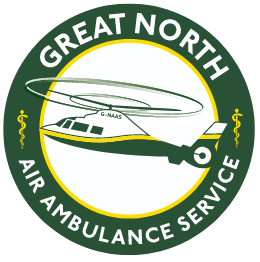Many people use the terms cardiac arrest and heart attack interchangeably, but they are not the same thing. Although a heart attack can lead to a cardiac arrest, the symptoms and treatment are different.
Jamie Walsh, GNAAS paramedic said: “Both a heart attack and a cardiac arrest are life-threatening medical emergencies, and you should call 999 immediately if you witness someone having a cardiac arrest or if you think you or someone else is having a heart attack. Make sure you follow the instructions of the operator and be aware that if a person is in cardiac arrest you will be instructed to perform CPR immediately. Early intervention can greatly increase the chance of survival, so it is vital you act quickly.”


To help distinguish between a heart attack and cardiac arrest, here is a guide on the two conditions and what you should do in the case of an emergency.
What is a heart attack?
A heart attack is when one of the coronary arteries becomes blocked. The heart muscle is then robbed of vital oxygenated blood, and if the blockage is not quickly treated, the heart will begin to die because it is not getting enough oxygen.
What are the symptoms of a heart attack?
Heart attack symptoms can vary from person to person but the most common signs are:
-
-
-
- Chest pain or discomfort that suddenly occurs and doesn’t go away. It may feel like pressure, heaviness or tightness in your chest.
- Pain that may spread to your left or right arm, neck, jaw, back or stomach.
- Feeling sick, sweaty, light-headed or short of breath.
-
-
Pain levels can vary. For some people the pain or tightness in their chest is severe, while other people just feel uncomfortable, or pain similar to indigestion.
What causes a heart attack?
In most cases a heart attack will be caused by coronary heart disease. Coronary heart disease is when one or more of the coronary arteries becomes narrowed because of a gradual build-up of fatty material. If a piece of the fatty material breaks off, it can cause a blood clot which can block a coronary artery and cut off the blood supply to the heart.
Those most at risk of a heart attack are:
-
-
- Smokers
- Those who eat an unhealthy diet – one that is high in saturated fat
- Those with high blood pressure
- Those with diabetes
- Overweight or obese people
- People who do not exercise frequently
- Older people, in particularly older men
- Those with a family history of heart disease
- People who have been exposed to air pollution, particularly traffic pollution
-
What do you do if you or another person might be having a heart attack?
If you think you or another person is having a heart attack, phone 999 immediately for an ambulance.
Even if you’re not completely sure whether the symptoms are a heart attack, it’s really important to seek medical attention regardless.
A person having a heart attack should:
-
-
- sit down and remain calm
- take a 300mg aspirin if there is any within reach
- wait for the medics
-


What is a cardiac arrest?
A cardiac arrest, also known as a cardiopulmonary arrest, happens when a person’s heart suddenly stops pumping blood around the body, and their breathing will be irregular and may stop.
What are the symptoms of a cardiac arrest?
Symptoms of a cardiac arrest include:
-
-
- Sudden loss of consciousness/responsiveness
- No breathing
- No pulse
-
The following warning signs may also occur before a cardiac arrest:
-
-
- Chest pain
- Shortness of breath
- Weakness
- Dizziness
- Palpitations
- Nausea
-
What causes a cardiac arrest?
In the majority of cases, a cardiac arrest is caused by an abnormal heart rhythm called ventricular fibrillation (VF).
VF happens when the electrical activity of the heart becomes so chaotic that the heart stops pumping suddenly, and quivers instead.
VF can be caused by:
-
-
-
- coronary heart disease
- heart attack
- cardiomyopathy
- congenital heart disease
- heart valve disease
- acute myocarditis (inflammation of the heart muscle)
- electrocution
- drowning
- drug overdose
-
-
What do you do if someone is having a cardiac arrest?
You need to call 999 and give immediate CPR (cardiopulmonary resuscitation) to the person.
You should also ask any bystanders to find a defibrillator (an automated external defibrillator – AED), which restarts the heart by giving an electric shock.
These are available in several public places, including shopping centres, train stations, airports, offices and schools.



